Potřebujeme váš souhlas k využití jednotlivých dat, aby se vám mimo jiné mohly ukazovat informace týkající se vašich zájmů. Souhlas udělíte kliknutím na tlačítko „OK“.
ASTM C1679-14
Standard Practice for Measuring Hydration Kinetics of Hydraulic Cementitious Mixtures Using Isothermal Calorimetry
Automaticky přeložený název:
Standardní praktiky pro měření hydratace Kinetika Hydraulické cementových směsí pomocí izotermické kalorimetrie
NORMA vydána dne 1.6.2014
Informace o normě:
Označení normy: ASTM C1679-14
Poznámka: NEPLATNÁ
Datum vydání normy: 1.6.2014
Kód zboží: NS-12182
Počet stran: 15
Přibližná hmotnost: 45 g (0.10 liber)
Země: Americká technická norma
Kategorie: Technické normy ASTM
Kategorie - podobné normy:
Anotace textu normy ASTM C1679-14 :
Keywords:
cement-admixture interactions, hydration kinetics, hydration performance, isothermal calorimetry, sulfate depletion, ICS Number Code 91.100.10 (Cement. Gypsum. Lime. Mortar)
Doplňující informace
| Significance and Use | ||||||||||||||||||||
|
5.1 Thermal power curves are used to evaluate the isothermal hydration kinetics of the combined mixture of different materials during the early period after being mixed with water. These isothermal power curves, or hydration profiles, may provide indications relative to setting characteristics, compatibility of different materials, sulfate balance and early strength development. The isothermal hydration profiles can also be used to evaluate the effects of compositions, proportions, and time of addition of materials as well as curing temperature. Special care must be used in evaluating extended retardation with paste specimens, which have been shown to overestimate the retardation of some mixtures containing cement, SCM, and admixtures. 5.2 This procedure can be used to measure the effect of chemical admixtures on the cement hydration profile. In many cases, the addition of chemical admixture changes the kinetics of cement hydration. 5.3 Although this technique has been used historically to understand issues related to setting and slump loss, it must be emphasized that isothermal calorimetry results cannot predict concrete performance definitely, either positively or negatively. Extensive verification in concrete at planned dosages and temperatures, and at higher dosages, is needed. Isothermal calorimetry is an effective tool to identify sensitivities, so that concrete testing can be efficiently planned and performed. 5.4 This practice provides a means of assessing the relative hydration performance of various test mixtures compared with control mixtures that are prepared in a similar manner. 5.5 The procedure and apparatus can be used to monitor the thermal power from pastes and mortars alone or in combination with chemical admixtures. 5.6 The isothermal calorimeter described here can be used to measure the thermal power and heat of hydration of mortars prepared independently or obtained by wet sieving from concrete in accordance with Practice C172. |
||||||||||||||||||||
| 1. Scope | ||||||||||||||||||||
|
1.1 This practice describes the apparatus and procedure for measuring relative differences in hydration kinetics of hydraulic cementitious mixtures, either in paste or mortar (see Note 1), including those containing admixtures, various supplementary cementitious materials (SCM), and other fine materials by measuring the thermal power using an isothermal calorimeter. Note 1: Paste specimens are often preferred for mechanistic
research when details of individual reaction peaks are important or
for particular calorimetry configurations. Mortar specimens may
give results that have better correlation with concrete setting and
early strength development and are often preferred to evaluate
different mixture proportions for concrete. Both paste and mortar
studies have been found to be effective in evaluating concrete
field problems due to incompatibility of materials used in concrete
mixtures.
1.2 The values stated in SI units are to be regarded as standard. No other units of measurement are included in this standard. 1.3 This standard does not purport to address all of the safety concerns, if any, associated with its use. It is the responsibility of the user of this standard to establish appropriate safety and health practices and determine the applicability of regulatory limitations prior to use. (Warning—Fresh hydraulic cementitious mixtures are caustic and may cause chemical burns to skin and tissue upon prolonged exposure.2) |
||||||||||||||||||||
| 2. Referenced Documents | ||||||||||||||||||||
|
Podobné normy:
Historická
1.6.2010
Historická
1.2.2010
Historická
1.8.2012
Historická
1.12.2013
Historická
1.4.2014
Historická
1.9.2012
Doporučujeme:
Aktualizace technických norem
Chcete mít jistotu, že používáte pouze platné technické normy?
Nabízíme Vám řešení, které Vám zajistí měsíční přehled o aktuálnosti norem, které používáte.
Chcete vědět více informací? Podívejte se na tuto stránku.


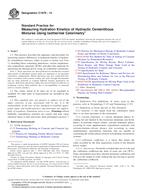
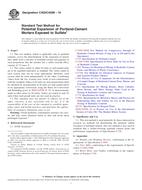 ASTM C452/C452M-10..
ASTM C452/C452M-10..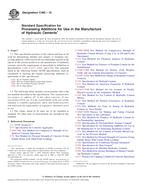 ASTM C465-10
ASTM C465-10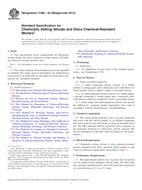 ASTM C466-03(2012)..
ASTM C466-03(2012)..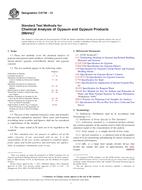 ASTM C471M-13
ASTM C471M-13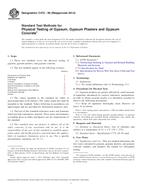 ASTM C472-99(2014)..
ASTM C472-99(2014)..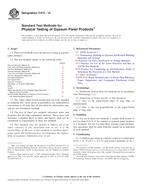 ASTM C473-12
ASTM C473-12
 Cookies
Cookies
